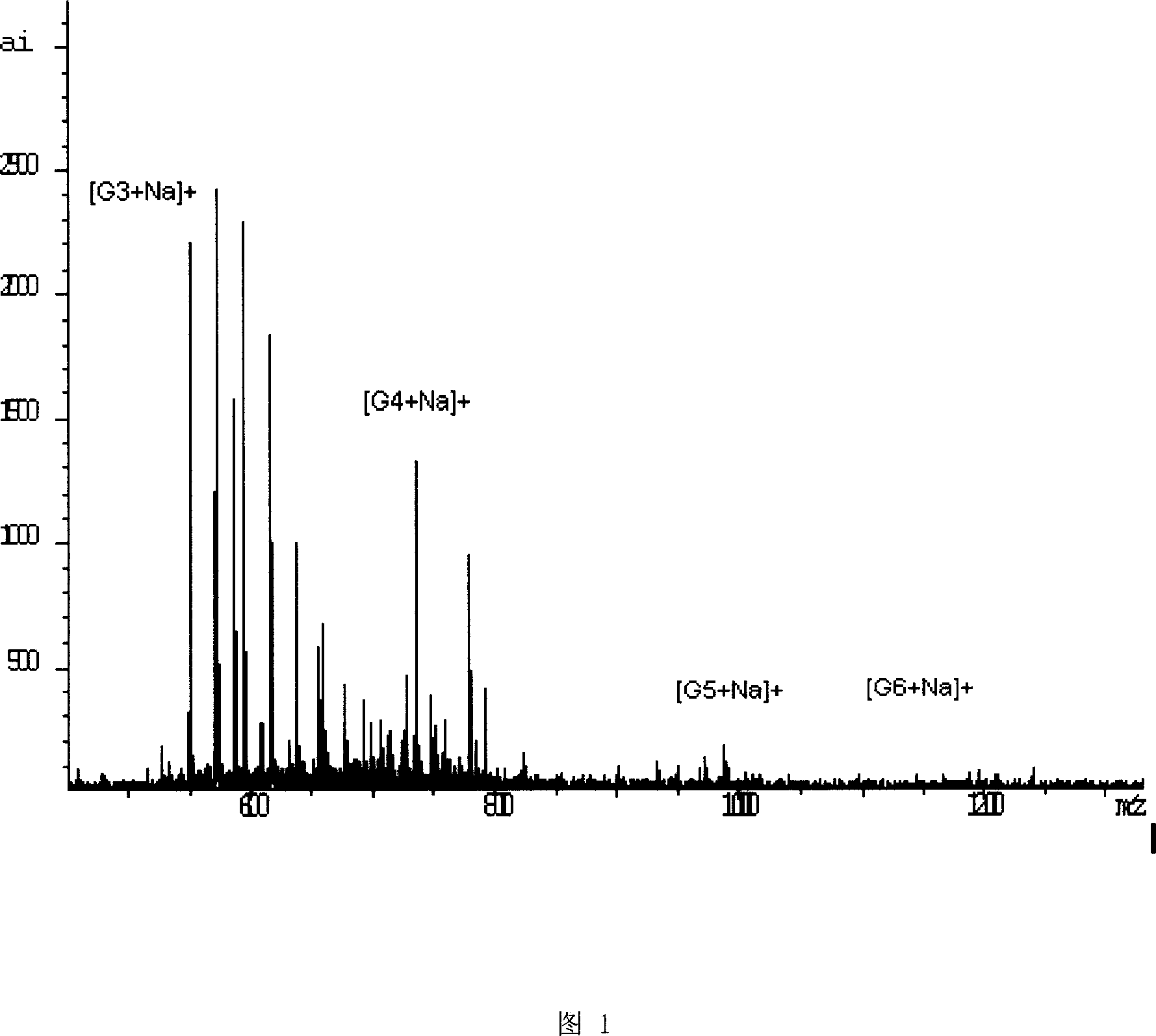Novel vibrionaceae vibrio bacterial strain and application thereof
A technology of Vibrio and Vibrio, applied in the field of microorganisms, can solve the problems of poor substrate specificity, limited application of alginate oligosaccharides, low enzyme production and the like
- Summary
- Abstract
- Description
- Claims
- Application Information
AI Technical Summary
Problems solved by technology
Method used
Image
Examples
Embodiment 1
[0012] The separation of embodiment 1 Vibrio CCTCC M 205031
[0013] Take 1 g of Sargassum, soak it in 100 ml of sterilized seawater, stir for 1 hour, take 1 ml of the suspension and put it into 100 ml of liquid medium, and culture it statically at 25°C for one week. The culture solution was streaked on a solid plate to isolate single clones, and the single clones were purified and cultivated for 5 consecutive generations. Pick a single clone and inoculate it into a test tube containing 3 ml of liquid medium, and culture at 25°C for 12 hours at 200 r / min. The culture solution was transferred into a 250 ml Erlenmeyer flask containing 50 ml of liquid medium at a ratio of 1%, and cultured at 25° C. at 200 r / min for 3 days. The culture solution was centrifuged at 12,000 r / min at 4°C for 10 minutes to remove bacteria, the enzyme activity of the supernatant was measured, and the strain with the highest enzyme activity was selected. One of the bacterial strains produced the highest...
Embodiment 2
[0014] Identification of Example 2 Vibrio CCTCC M 205031
[0015] 1. Morphological characteristics
[0016] The colony of strain CCTCC M 205031 cultured on the conventional Zobell 2216E plate for 24 hours was round, translucent, smooth, with neat edges and a diameter of 1.5 mm; the colony on the conventional TCBS medium was yellow with a diameter of 2.1 mm. The strains are all Gram-negative, rod-shaped, and motile.
[0017] 2. Growth conditions
[0018] Strain CCTCC M 205031 is a facultative anaerobic bacterium. Strain CCTCC M 205031 grows well in the concentration range of 1% to 7% NaCl, the optimum NaCl concentration is 3%, the optimum growth temperature is 25°C, and the optimum growth pH is 6.0.
[0019] 3. Physiological and biochemical characteristics
[0020] Routine biochemical experiments showed that the strain CCTCC M 205031 had a positive oxidase reaction, fermented glucose to produce acid and did not produce gas, and was resistant to Vibrio inhibitor O / 129 (2,4-d...
Embodiment 3
[0025] Strain CCTCC M 205031 is a Gram-negative bacillus, motile, positive for oxidase reaction, fermenting glucose to produce acid but not gas, sensitive to Vibrio inhibitor O / 129, non-luminous, and non-pigment-producing, so the preliminary judgment of the strain CCTCC M 205031 belongs to the genus Vibriosp. of the Vibrio family. According to the comparison of the physiological and biochemical characteristics of this strain with some Vibrio bacteria, CCTCC M205031 is the closest to V.aestuarianus, but it should be pointed out that there are many references to V.aestuarianus in Bergey's Bacteria Identification Manual (Ninth Edition). Physiological and biochemical characteristics are not described, so CCTCC M 205031 may have more similarities and differences with V.aestuarianus. The preparation of embodiment 3 alginate lyase
[0026] (1) Cell culture
[0027] A single clone of Vibrio CCTCC NO: M 205031 was picked and inoculated into a test tube containing 3 ml of liquid mediu...
PUM
| Property | Measurement | Unit |
|---|---|---|
| Diameter | aaaaa | aaaaa |
| Molecular weight | aaaaa | aaaaa |
Abstract
Description
Claims
Application Information
 Login to View More
Login to View More - R&D
- Intellectual Property
- Life Sciences
- Materials
- Tech Scout
- Unparalleled Data Quality
- Higher Quality Content
- 60% Fewer Hallucinations
Browse by: Latest US Patents, China's latest patents, Technical Efficacy Thesaurus, Application Domain, Technology Topic, Popular Technical Reports.
© 2025 PatSnap. All rights reserved.Legal|Privacy policy|Modern Slavery Act Transparency Statement|Sitemap|About US| Contact US: help@patsnap.com

